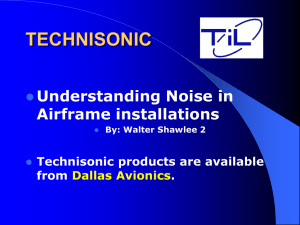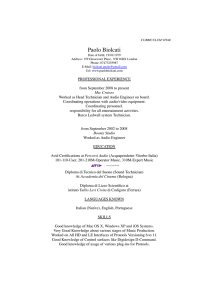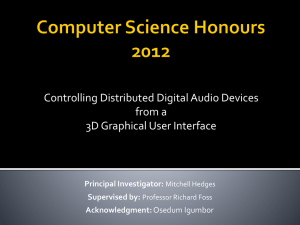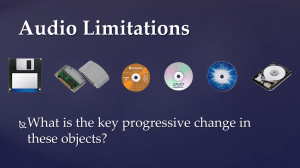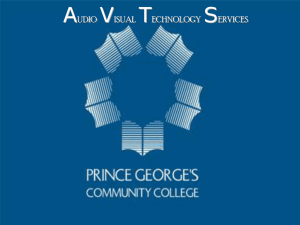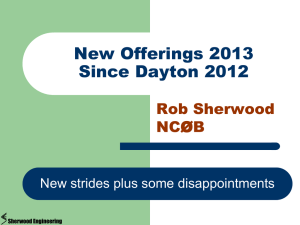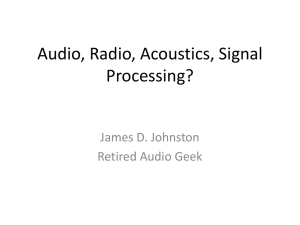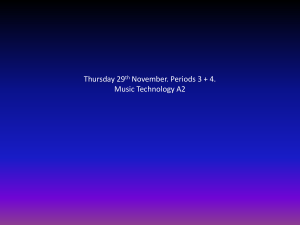TECHNISONIC A711L Series
advertisement
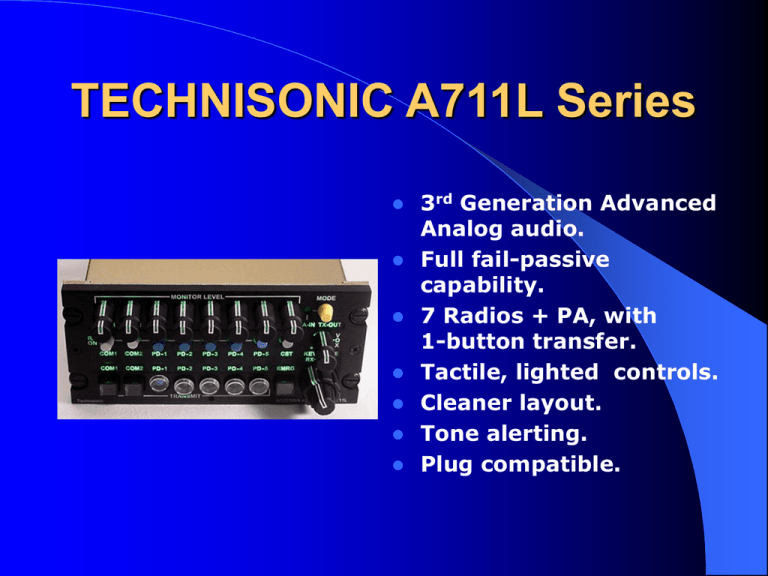
TECHNISONIC A711L Series 3rd Generation Advanced Analog audio. Full fail-passive capability. 7 Radios + PA, with 1-button transfer. Tactile, lighted controls. Cleaner layout. Tone alerting. Plug compatible. TECHNISONIC A711L series Cosmetic Options. NVG + flexible light. Powersonix PA capability. Nifty PA options. Latent features. Ideal mate to the TDFM-7300. Address integrated NAV/COM packages. TECHNISONIC Coming soon, the ARTS-100 system. genuine “wahoo” test moment. http://til.ca short and sweet. Walter2@til.ca any time for audio questions. Available from Dallas Avionics. A TECHNISONIC GET TRAINED! Saturday at 1:30pm Prizes for correct answers! See us at BOOTH 103 / 801 Thank you! Noise is the Enemy Installation costs and time are momentary… But a bad install is forever. Take the time to get everything as right as possible. Understanding noise origins is critical. Types of Noise In-band audio frequency noise. Cross-talk Signal contamination Inverter/Generator Contamination Types of Noise Out-of-Band RF Sources: AM Comms HF/SSB FM Comms RF Problems Ship Issues can be multi-modal: Radio to Radio Interference Harmonic Direct Radio to Audio line rectification Antenna Induced Standing Waves Mechanical-RF The Main Rotor will modulate outgoing transmissions, and incoming reception, and change reflected power. Antenna PLACEMENT is everything to fix this. Antenna Issues Bottom Mounts work best for AM Comms on helicopters. Spacing & Proximity There’s rarely enough room in general aviation aircraft... 10 kg in a 5 kg box Sometimes it’s just not that easy… Audio Wiring Wiring topology and routing has a large bearing on audio system performance. No amount of shielding can overcome design limits. Audio Wiring Access/A (floating ground) technology can provide a 20-30dB improvement in noise and crosstalk over even high end grounded systems. That is 100-1000 times better. Audio Wiring Grounded audio returns are highly subject to GROUND LOOP noise. This style interconnect was an early method of saving weight, complexity and wire, but offers the worst possible performance. Ground Loops How we wish aircraft worked: Ground Loops What really happens: Ground Loops The “frame ground” is alive with voltages caused by different loads. Ground Loops Attaching audio returns to ground contaminates the audio signal with every load current flowing through the airframe. These induced voltages can be VERY large, and are a real problem especially for low level audio lines like microphones. Ground Loops Ground currents also inject CROSS-TALK, as every audio line returned though ground becomes mixed with every other audio signal. Ground Loops The answer is to LIFT audio lines from the airframe ground, and process them as floating signals. This improves both noise and cross-talk significantly. Ground Topology Floating Topology

